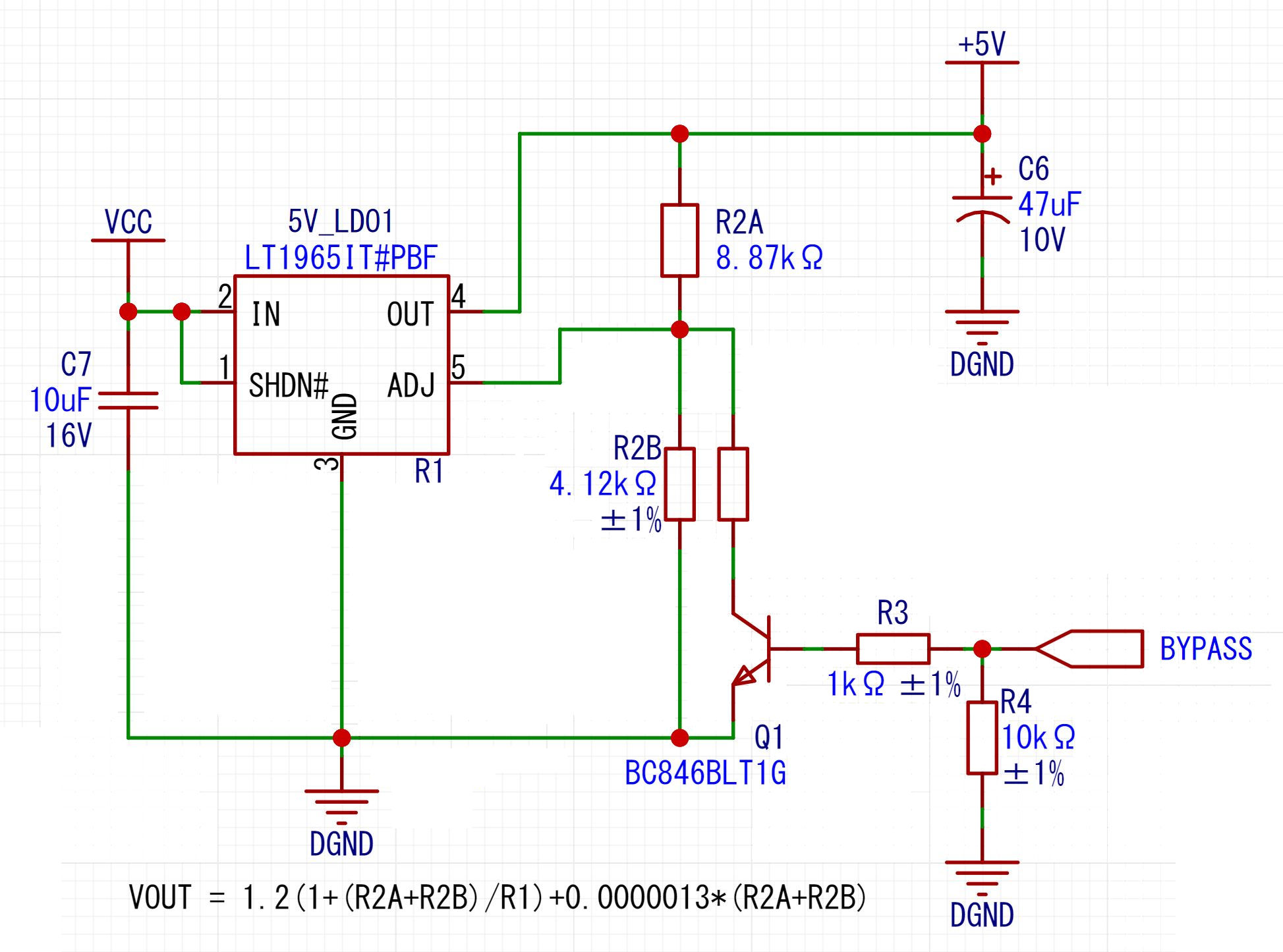I'm designing an LDO power supply that is adjustable, I want to be able to switch between two output voltages using a MCU. I've designed the following circuit but can't test it as the parts are on order, do you think this circuit will work?
R1 and R2A+R2B form the feedback resistor divider for the LDO. The initial output voltage is set with both R2A and R2B values added up, and the output voltage is adjusted by turning on Q1 to short R2B.
I've searched and could not find similar circuits.
LDO LT1965: https://www.analog.com/media/en/technical-documentation/data-sheets/1965fb.pdf
Thanks


